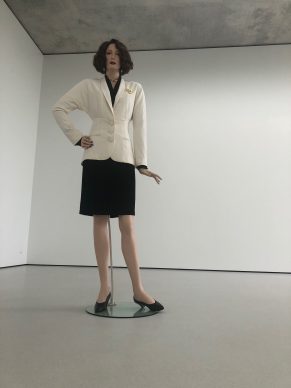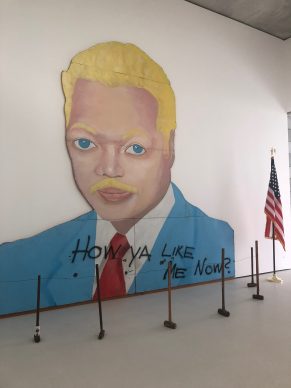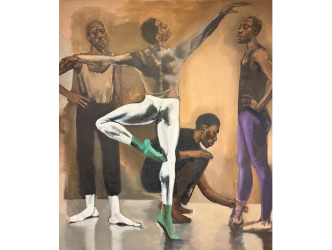Forbes values the wealth of this man, who started out in real estate in 1983, at 3.5 billion dollars and ranks him 652nd in their list of the world’s richest people in 2018.
Yet when the subject is broached with him he makes this prediction: “I can assure you I’m not going to die rich.” Together with his wife Emily Wei Rales, an art historian and former director of the Barbara Gladstone Gallery in New York, they have set up a foundation, Glenstone, whose mission is to continue to expand their art collection up until and even after their deaths.
The couple will open the foundation to the public on 4 October in Potomac in the state of Maryland, 19 kilometres from the United States capital, on a 94,000m2 estate formerly used by a fox-hunting ground, with a fabulous space measuring 4650m2 designed by the American architect Thomas Phifer. The total cost of the new project is in the region of 200 million dollars.
Thomas Phifer explains how he came up with the design for the place:
A place of peace, with nothing sensationalist about it, to freely display what they call “slow art”.
Emily talks about her notion of slow art:
In other words, they won’t be exhibiting their entire collection at once and the works that are there will remain installed across the 18 rooms of the new pavilion for a long time, as well as in the park and in the first museum which opened in 2006 (1).
“Split-Rocker”, the giant toy’s head completely covered in flowers made by Jeff Koons in 2000 for the Bicentenaire shows in Avignon (the work requires a full-time gardener for its upkeep), isn’t placed at the entrance to the museum like in Bilbao outside the Guggenheim, but out in nature, further away. To see it up close you have to earn it.
Mitchell Rales began collecting in the 1990s, at a time when the art market was in crisis. Back then he simply wanted to “decorate his house” with abstract expressionist paintings like those of Jackson Pollock or Franz Kline: “I had no idea how much of a real opportunity it was”.
Today he claims to have six works by Pollock in his possession but in 2013 the couple sold one of his paintings dating from 1948 for 58.3 million dollars, the record price for the artist, “to enable us to acquire an entire collection which included pieces by Jeff Wall, Dan Graham, Maurizio Cattelan etc, from the collection of the Canadian collector Ydessa Hendeles.”
In the series of works that have been resold – “they are rare,” say the Raleses – there’s also a painting by Mark Rothko.
“We sold it to buy another one of better quality,” they explain. The painting in question, which is impressive, dates from 1958 and measures 4.2 metres in width, and was acquired at auction in 2003 for 16.3 million dollars. It had been put up for sale by the French businessman François Pinault.
Mitchell married Emily in 2008 and it was through her influence that he grew increasingly open to much more contemporary art.
Together they compiled a list of the artists they wanted, who had to have proved their relevance over the course of a career spanning fifteen years or more.
It’s difficult to judge the contents of their collection, which contains 1,300 works from around 200 artists, because only some of the works are on display. These include the American artists Robert Gober (born in 1954), Charles Ray (born in 1953), and Cy Twombly (1928-2011), who have entire rooms dedicated to their work.
But from David Hammons (born in 1947), the particularly sought-after African-American artist from whom they have about a dozen works in their possession, there’s just one work on display at Glenstone. The couple talk about their interest in David Hammons:
According to Mitchell Rales: “From certain artists, like Andy Warhol or Jean Michel Basquiat, I only have one painting in my possession. Their value is too high.
On the other hand, we’re drawn to others that are more rarely seen in the United States, like Gutai (the Japanese iconoclastic movement from the 1950s to ’70s which has an entire room dedicated to it), or contemporary Brazilian talents like Lygia Pape (1927-2004). Collecting is very difficult nowadays. And we don’t buy much at auction. Money shouldn’t be a problem, but we’ve established strict rules.”
“Of course we don’t have an annual budget and we’re vigorously pursuing our goals, but some prices just aren’t reasonable. Everything has been planned to ensure that our foundation lasts. 99% of the works will remain here. And when we die the foundation will continue to complete the collections of the artists we follow”.
In the United States the tax deductions for every purchase of artworks made by a foundation have been the subject of some controversy, and Glenstone was included in discussions on the subject in 2015 which reached the level of the finance committee at the Senate, according to the New York Times.
But regardless of questions surrounding tax, in terms of an aesthetic experience Glenstone is a real achievement, one which should henceforth be added to the short list of great places in the world where you can find a marriage of art, architecture and nature.
(1) It is staging an exhibition from their collection dedicated to Louise Bourgeois, featuring works that span her entire career from 1949 onwards.
Support independent news on art.
Your contribution : Make a monthly commitment to support JB Reports or a one off contribution as and when you feel like it. Choose the option that suits you best.
Need to cancel a recurring donation? Please go here.
The donation is considered to be a subscription for a fee set by the donor and for a duration also set by the donor.
























